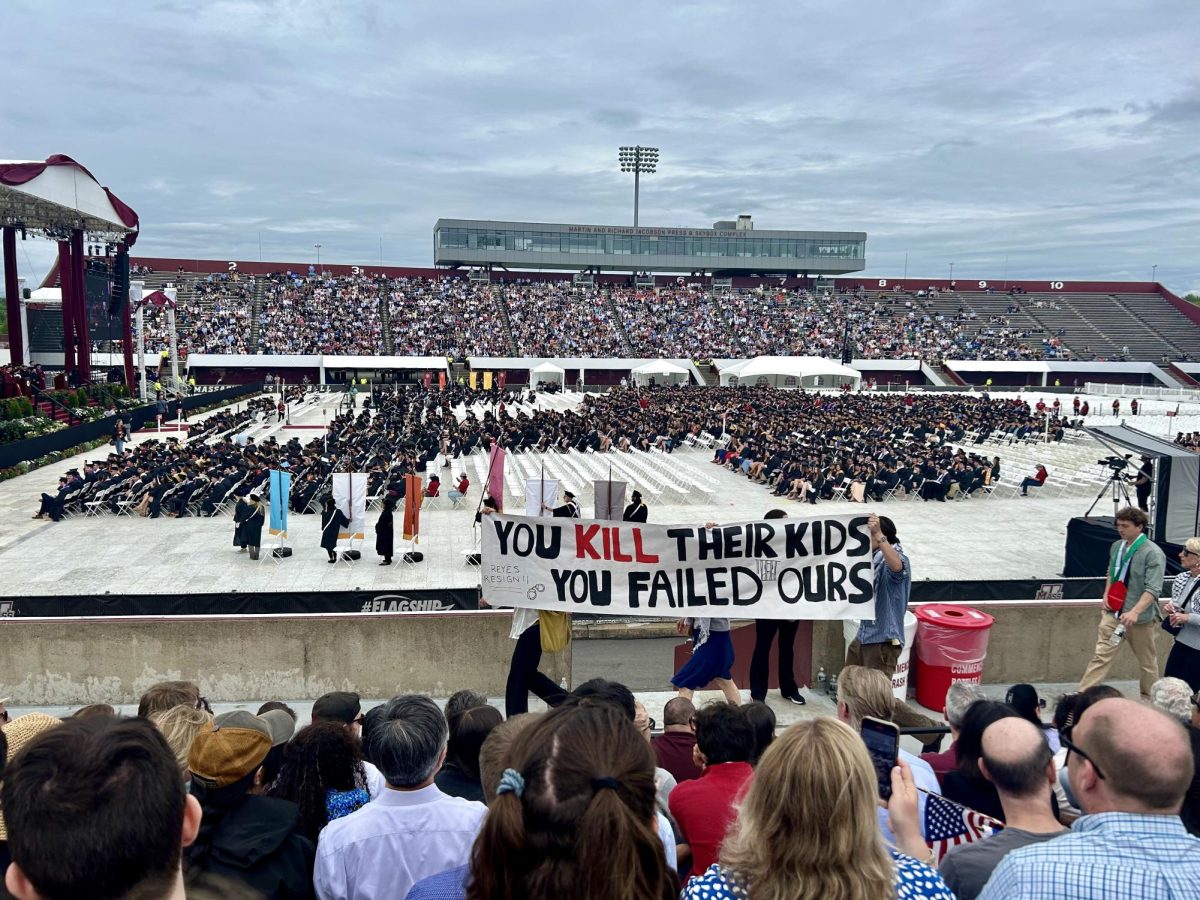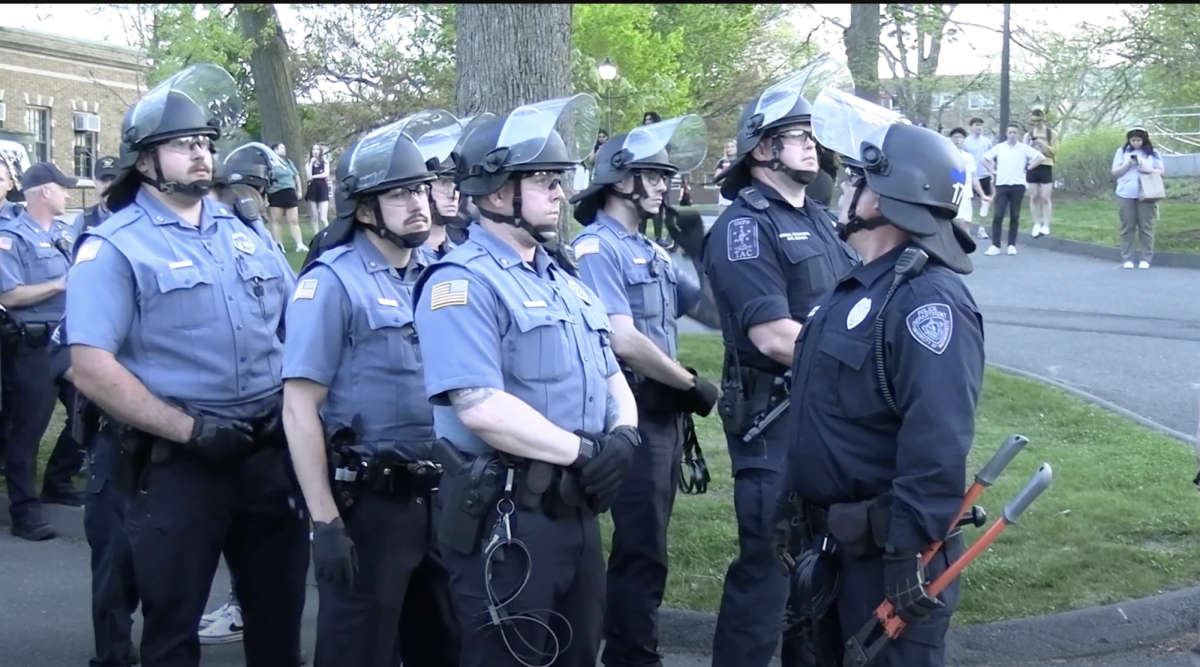
A panel of University of Massachusetts professors gathered last Thursday night in the Morrill Science building for a panel discussion on the recent earthquake and tsunami event which ravaged Japan and parts of the Pacific on March 11.
Included in the “Scientific Forum on 2011 Japanese Earthquake and Tsunami” were seven professors, among them geologists, civil and environmental engineers and specialists on Japanese culture and literature.
“In the United States, we have never experienced a tragedy on this level,” said Assistant Professor of Sedimentology and Coastal Processes Jonathan Woodruff.
The greatest death toll from a natural disaster in the United States was between 10,000 and 12,000 after the Galveston Hurricane struck southeastern Texas in 1900. The number of confirmed deaths as a result of Hurricane Katrina in 2005 along the Gulf Coast totaled 1,464. Woodruff compared the predicted death toll of 10,000 in Japan with the 280,000 deaths incurred after the 2004 Indian Ocean earthquake and tsunami, which originated just off the coast of Sumatra and hit Indonesia, Sri Lanka, India, and Thailand the hardest.
Early on the morning of March 11, an 8.9 magnitude earthquake struck Japan’s eastern coast, rupturing just north of the city of Honshu at a triple-junction of the Japan Trench, Ryukyu Trench, and Izu-Ogasawara Trench, and left the ground in that area shaking for six minutes, explained Associate Professor of Geomechanics Michele Cooke.
The shaking was at its heaviest in the first two minutes, Cooke said, adding that this is “a much longer time than it may sound when looking for shelter.”
The earthquake generated a maximum upward acceleration of 2.7g, or 2.7 times the force of gravity in the opposite direction, launching objects into the air, said Cooke. The initial earthquake was followed by a second quake with a magnitude of 7.9, a “sizable aftershock,” she said.
The earthquakes resulted in a permanent geological deformation, shifting Japan an average of 2.4 meters (and in some places as much as 4.4 meters) to the east and permanently downward, as well, with a maximum subsistence of roughly 0.7 meters, said Woodruff.
As a consequence of the ongoing shocks, provisional sea walls built to withstand a tsunami event were rendered unsuccessful before the tsunami ever reached Japan.
“[The sea walls] did serve a purpose, even if it looked like they failed,” said Woodruff, who explained that with the presence of the walls, water floods coastal areas at a much slower rate than if such waves were allowed to freely crash onto the shore.
After the earthquake, a portion of the ocean the size of northern Japan moved upwards four meters, while the landmass of this area of Japan itself dropped as much as a meter, said Woodruff. The amount of water displaced by this event was equal to the entire northern part of Japan.
“Japan has experienced a lot of tsunamis in the past, so it’s not like it wasn’t prepared. This tsunami was just a lot bigger than anything before,” said Woodruff.
Woodruff explained that the earthquake generated extremely long waves, measuring approximately 300 kilometers. Even at depths of five kilometers, waves of this length interact with the seabed wherever they are as shallow-water waves. The waves, he said, were pushed across the Pacific Ocean at speeds of 200 meters per second, or 450 miles per hour, “about the speed of a jet airliner, to put it into perspective,” said Woodruff.
The waves traveled towards Japan and slowed to speeds of 20 to 30 miles per hour just before hitting the Japanese coast about 20 to 30 minutes after the quake. As the waves neared the coast, their speed slowed in the shallower water, while the period between their crashing remained the same. The wavelength shortened, but in order to conserve energy, the waves heightened as well, rising substantially as they approached the shoreline, explained Woodruff.
Sergio Breña, an associate professor of Civil and Environmental Engineering, whose presentation focused on how Japanese structural engineering affected Japanese buildings’ readiness for a quake of this magnitude, raised an unlikely question in his presentation, “The 2011 Tohoku Earthquake: A Structural Engineering Success Story(?)”
“To date, there are no major failures that could be attributed directly to the earthquake,” said Breña. “Most of the damage I have seen has been from the tsunami.”
By the time the seismic waves from the earthquake reached Japan’s capital, Tokyo, they were already much smaller in magnitude than at the quake’s epicenter, Breña said.
“When we think about earthquakes, we think of collapse[s] and heavy things falling on top of you, which is why they teach you to get under a table, which will not cushion you from a total collapse, but will protect you from something like a falling light fixture,” Breña said.
Breña illustrated the preparedness of Japanese cities to withstand an earthquake of this magnitude by showing footage from a specialized facility where structures are built and tested atop a large surface that simulates the ground-shaking of an earthquake. Engineers then analyze these tests to determine what structural reinforcements are needed to support buildings of a particular height and material, he explained. Associate Professor of Civil and Environmental Engineering Dr. Carlton Ho said that apart from provisions designed to protect against structural collapse, the planners behind the infrastructure of Japan’s nuclear power reactors “most likely didn’t take into account the risk of the entire system or all means of power going out.”
Ho explained that improved network analysis needs to be performed to avoid so-called cascading-effect disasters of this sort can have on infrastructural networks in place.
“Every time you have a big earthquake, you have big lessons learned,” said Ho, who referenced the 1906 San Francisco earthquake that destroyed water mains and gas lines and left fires burning with no means of putting them out.
“Now there is water on supply to put out fires if the water mains break,” he said.
Reiko Sono, a senior lecturer in Asian Languages and Literature, explained in her presentation what she identifies as a cultural divide between Japanese and Western society, and its implications on the civilian response to the devastation. Sono said people in the area hit hardest by the tsunami are especially known for their patience and collective perseverance, attributing to this the practical nonexistence of looting.
“The mentality is a little different,” she said of the region. “One of the good things about living in New England is you don’t have to worry about [tsunamis]. People are prepared for tsunamis in coastal areas, but as Jon [Woodruff] said, it was much more than anyone expected, so all the drills and all they did to prepare for the tsunamis didn’t work,” Sono said.
She explained that Japan, which has a long history with tsunami events, has had parts of its culture sculpted by such disasters. For instance, Sono said the tsunami which hit Japan in 1896, which had particularly devastating financial implications for wealthy Japanese, actually came to symbolize economic rebirth for some lower class Japanese.
“When the earthquake happened in the 19th century, people saw it rather as an opportunity to rebuild,” said Sono.
Sono said the now famous “catfish prints,” valuable Japanese art depicting brightly colored catfish, were illegally produced and distributed throughout the country, alluding to a traditional folk belief that huge catfish under the surface of the ground caused earthquakes.
In the artwork “you see the catfish helping people to rebuild the world,” Sono said.
The lesson to be learned from the Tofuku Tsunami, Ho said he believes, is “the whole idea that you need to look at the network, as opposed to just the individual structure.”
Moving forward from the disaster, Breña said “emergency backup systems in critical facilities have to remain operational after an earthquake” and “tsunami resistant construction needs to be developed or improved.”
“The lesson to be learned is that you can’t be too prepared,” said Sono.
Brian Canova can be reached at [email protected].






